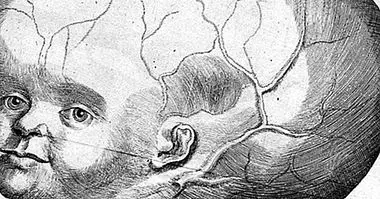Astereognosia and tactile agnosia: symptoms and causes
Astereognosia, also called tactile agnosia , is a little known disorder because it does not usually affect very negatively the lives of people who suffer it. It is a type of agnosia (that is, a disorder in the identification of objects that is not due to sensory alterations) that specifically alters recognition through touch.
In this article we will describe the most significant clinical features and the most common causes of astereognosia or tactile agnosia . Before proceeding we will briefly dwell on the concept of agnosia, since it is important to adequately contextualize astereognosia and compare it with other disorders of the same class.
- Related article: "The 5 types of agnosia (visual, auditory, tactile, motor and corporal)"
What are agnosias?
Agnosias are a group of disorders that are characterized by the absence of recognition of stimuli that occur in a certain sensory modality, such as touch or hearing. In these cases the deficits are not a consequence of alterations in the organs of the senses , but at higher levels of the perceptual pathways.
This type of symptom usually appears as a consequence of injuries that damage the cerebral cortex, interfering in the transmission of sensory impulses to the pathways related to conscious recognition. Some of the most frequent causes of agnosia include ischemic strokes and neurodegenerative diseases.
In general, agnosias occur in a single modality, and are often classified according to the sense in which the alteration occurs. So, we can find visual, auditory, tactile or somatosensory, motor and body agnosias , which consist of difficulties in identifying one's own body or a part of it, often one of the halves.
An example of this type of disorder would be the inability to recognize that the object that the person has in front of him is a towel through sight, although he could identify it by touch; in this case we would speak of a visual agnosia. Sometimes, if the brain damage that causes the disturbance is very serious, several sensory modalities may be affected.
- Maybe you're interested: "The 31 best Psychology books you can not miss"
Defining astereognosia and tactile agnosia
"Astereognosia" is a term that is commonly used to refer to tactile agnosia, that is, to the inability to identify objects through touch in the absence of anomalies in perception itself. By cons, stereognosia would be the basic capacity that allows us to perceive and recognize this type of stimulus in a normal way
In this type of agnosia the person can not recover from memory the information necessary to identify stimulus keys related to touch, such as temperature, texture, size or weight. However, he is able to do so when he uses other senses (usually sight), unless other kinds of agnosia are present.
Some authors use the denomination "Tactile agnosia" only in cases in which the affectation is limited to one of the hands or at most at two, whereas if the problem involves tactile perception in a more general way they prefer to speak of astereognosia. In any case, there seems to be no consensus around these nomenclatures.
On many occasions astereognosia and tactile agnosia are not diagnosed because they do not usually interfere significantly in the functioning of those who suffer them. This has led to an underestimation of the number of cases of astereognosia, as well as to the scarcity of research in this regard that is detected when reviewing the scientific literature.
Causes of this disorder
The available evidence reveals that astereognosia appears as a consequence of lesions in two specific regions of any of the cerebral hemispheres: the parietal lobe and the association cortex (composed of parts of the parietal, temporal and occipital lobes). It is also associated with Damage to the spine or back of the spinal cord .
The specific location of the lesions determines the peculiarities of the symptoms. In this way, when the ventral part of the cortex is damaged, the tactile perception of three-dimensional objects is especially affected, whereas if the same happens in the dorsal cortex, it is more common for recognition problems to have a cognitive character.
One of the disorders that are most directly related to astereognosia is Alzheimer's disease, characterized by a progressive cognitive deterioration that especially affects memory.This association supports the approaches that defend that agnosias are mainly a memory disorder , and not of perception.
Tactile agnosia, or more specifically digital agnosia (which affects the fingers), is also a characteristic sign of Gerstmann syndrome. In this disorder, astereognosia occurs with other peculiar symptoms, such as difficulties in orienting oneself between left and right, to calculate or to make graphic representations, especially for writing.



















